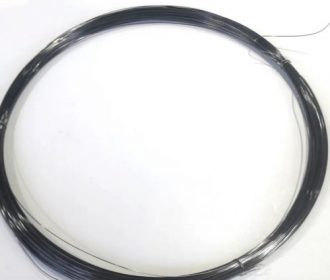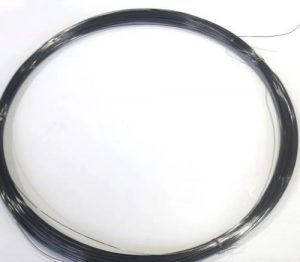What Is TZM Alloy
The aerospace industry constantly seeks materials that can withstand extreme conditions while maintaining structural integrity and performance. One such material is TZM alloy.

TZM alloy, composed of titanium (0.5%), zirconium (0.08%), carbon (0.02%), and molybdenum (balance), exhibits a range of exceptional mechanical properties that make it indispensable in aerospace engineering. The addition of titanium and zirconium improves the alloy’s strength and hardness, while the presence of carbon enhances its wear resistance. Molybdenum, being the primary component, imparts excellent high-temperature stability and thermal conductivity.
- One of the most notable properties of TZM alloy is its high tensile strength, which remains significant even at elevated temperatures. It can maintain a tensile strength of approximately 690 MPa at room temperature, and about 480 MPa at 1000°C. This strength is crucial for aerospace components that must withstand extreme thermal and mechanical stresses.
- Furthermore, TZM alloy offers superior creep resistance, which is the ability to resist deformation under prolonged exposure to high temperatures and stress. This property is vital for applications like turbine blades and rocket nozzles, where long-term stability and reliability are paramount.
- The thermal conductivity of TZM alloy, approximately 142 W/m·K, ensures efficient heat dissipation, reducing the risk of thermal fatigue and failure. Additionally, its low coefficient of thermal expansion (about 5.3 x 10⁻⁶ /°C) minimizes thermal stress during rapid temperature changes, enhancing the durability of the components.
Related reading: TZM Alloy Applications, Properties & Preparation Methods
How Is TZM Alloy Used in the Aerospace
These exceptional mechanical properties make TZM material an essential component in aerospace engineering. Here are some specific applications:
- Rocket Nozzles: TZM alloy is used in the manufacturing of rocket nozzles because it can withstand the extremely high temperatures and stresses encountered during rocket propulsion.
- Aerospace Fasteners: Due to its strength and high-temperature stability, TZM material is used for fasteners in aerospace applications where both structural integrity and heat resistance are critical.
- Thrust Chambers: The alloy’s ability to maintain mechanical properties at high temperatures makes it suitable for use in thrust chambers, which are exposed to high-temperature exhaust gases.
- High-Temperature Structural Components: TZM material is used for various structural components in aerospace applications that require materials to maintain strength and stability at elevated temperatures.
- Heat Shields: The alloy is used in heat shields to protect spacecraft from the extreme heat encountered during re-entry into the Earth’s atmosphere.
- Turbine Blades: The high-temperature capabilities and oxidation resistance of TZM alloy make it ideal for turbine blades in jet engines, where the material is exposed to high temperatures and mechanical stresses.
Are There Any Other High-Temperature Materials?
While several materials are used in high-temperature applications, TZM alloy offers unique advantages that make it particularly suitable for aerospace uses.
- Tungsten:
Tungsten has a higher melting point and strength at high temperatures than TZM alloy. Despite tungsten’s superior heat resistance, TZM alloy is easier to machine and form, making it more practical for complex aerospace components. Additionally, TZM’s balance of high strength and lower weight is crucial for aerospace efficiency.
- Inconel:
Inconel, a nickel-chromium superalloy, is known for its oxidation and corrosion resistance at high temperatures. TZM alloy typically offers higher strength and creep resistance at extreme temperatures compared to Inconel, making it more suitable for applications like rocket nozzles and turbine blades.
- Titanium Alloys:
Titanium alloys are valued for their high strength-to-weight ratio and corrosion resistance. Although titanium alloys are lighter, TZM alloy can endure much higher temperatures without compromising its mechanical properties, making it ideal for components exposed to extreme heat.
- Ceramics:
Ceramics can withstand very high temperatures and are used in various high-heat applications. Unlike ceramics, which can be brittle and difficult to machine, TZM alloy combines high-temperature performance with better machinability and toughness, making it more versatile for aerospace component manufacturing.
Conclusion
TZM alloy’s exceptional high-temperature strength, thermal conductivity, and resistance to creep and oxidation make it indispensable in aerospace applications. Its use in rocket nozzles, gas turbine blades, heat shields, and structural components underscores its importance in ensuring the reliability and efficiency of aerospace technology.
Compared to other high-temperature materials, TZM alloy offers a unique combination of properties that make it an optimal choice for critical aerospace components, driving advancements and enhancing performance in this demanding field. For more details, please visit Advanced Refractory Metals (ARM).



Recent Comments